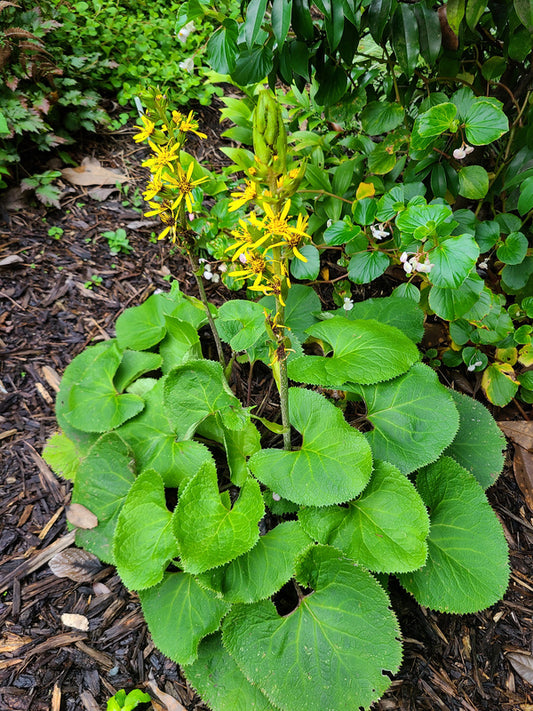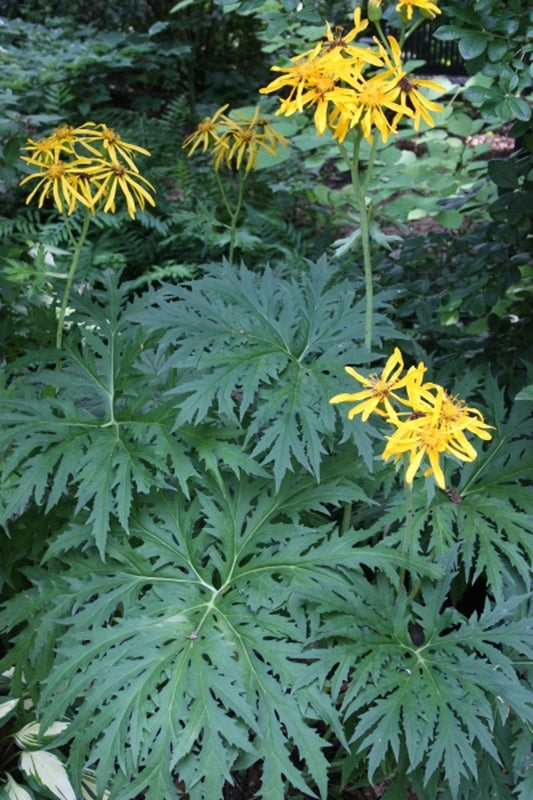Ligularia flowers in the fall, producing clusters of butterfly-attracting, yellow composite blooms. Ligularia prefers moist soil as found in its native habitat along stream banks and other bodies of water.
-
Ligularia fischeri 'Sorak'
Item #: 18120
Zones: 5a to 8b, guessing
Dormancy: Winter
Height: 24" tall
Culture: Part Sun to Shade
Origin: Korea
Pot Size: 3.5" pot (24 fl. oz/0.7 L)
Regular price $23.00Regular priceUnit price per -
Ligularia japonica 'Chinese Dragon'
Item #: 9018
Zones: 4a to 8b, at least
Dormancy: Winter
Height: 36" tall
Culture: Part Sun to Light Shade
Origin: China
Pot Size: 3.5" pot (24 fl. oz/0.7 L)
Regular price $26.00Regular priceUnit price per
More Information About Ligularia
The genus Ligularia is an old world group in the aster family that is used as both foliage and flowering plants in the garden. Ligularia flowers in the fall, producing clusters of butterfly-attracting, yellow composite blooms. There is some confusion about Ligularia and Farfugium. These two genera used to be a single genus but were split into the cold-loving Ligularia (roughly 140 species) and the warm-loving Farfugium (2 species).
Tips for Growing Ligularia
Ligularia prefers moist soil as found in its native habitat along stream banks and other bodies of water. We grow ours in partial shade, but if the soil is kept consistently moist, you might be able to grow it in full sun, especially in the north.
Ligularia in the Garden
Ligularia pairs well with hosta, hibiscus, iris, ferns as well as its botanical cousins, petasites and syneilesis. Depending on the species, Ligularia can be used as a backdrop to smaller plants or as a specimen plant. It is deer-resistant too.





